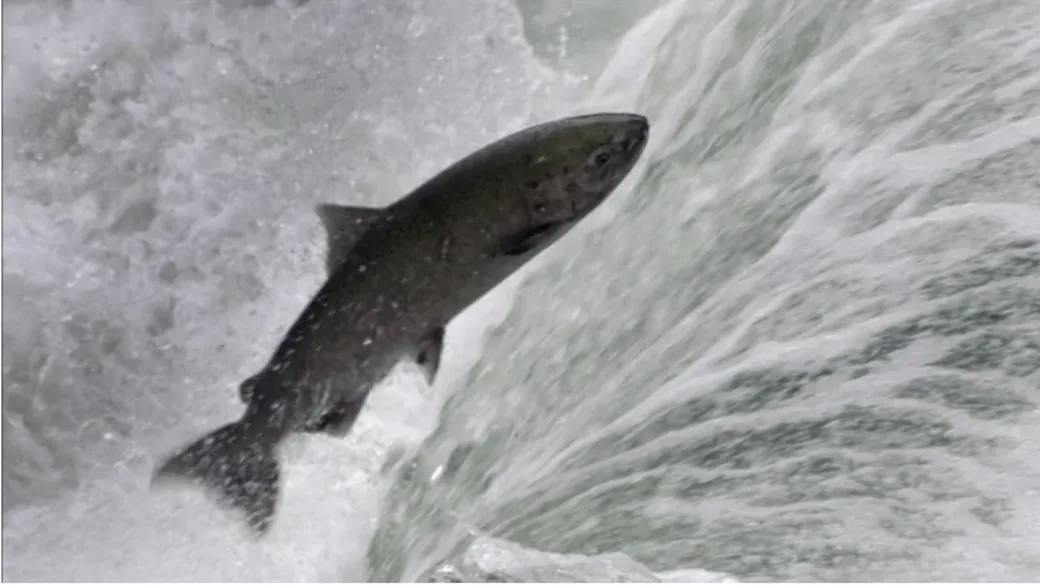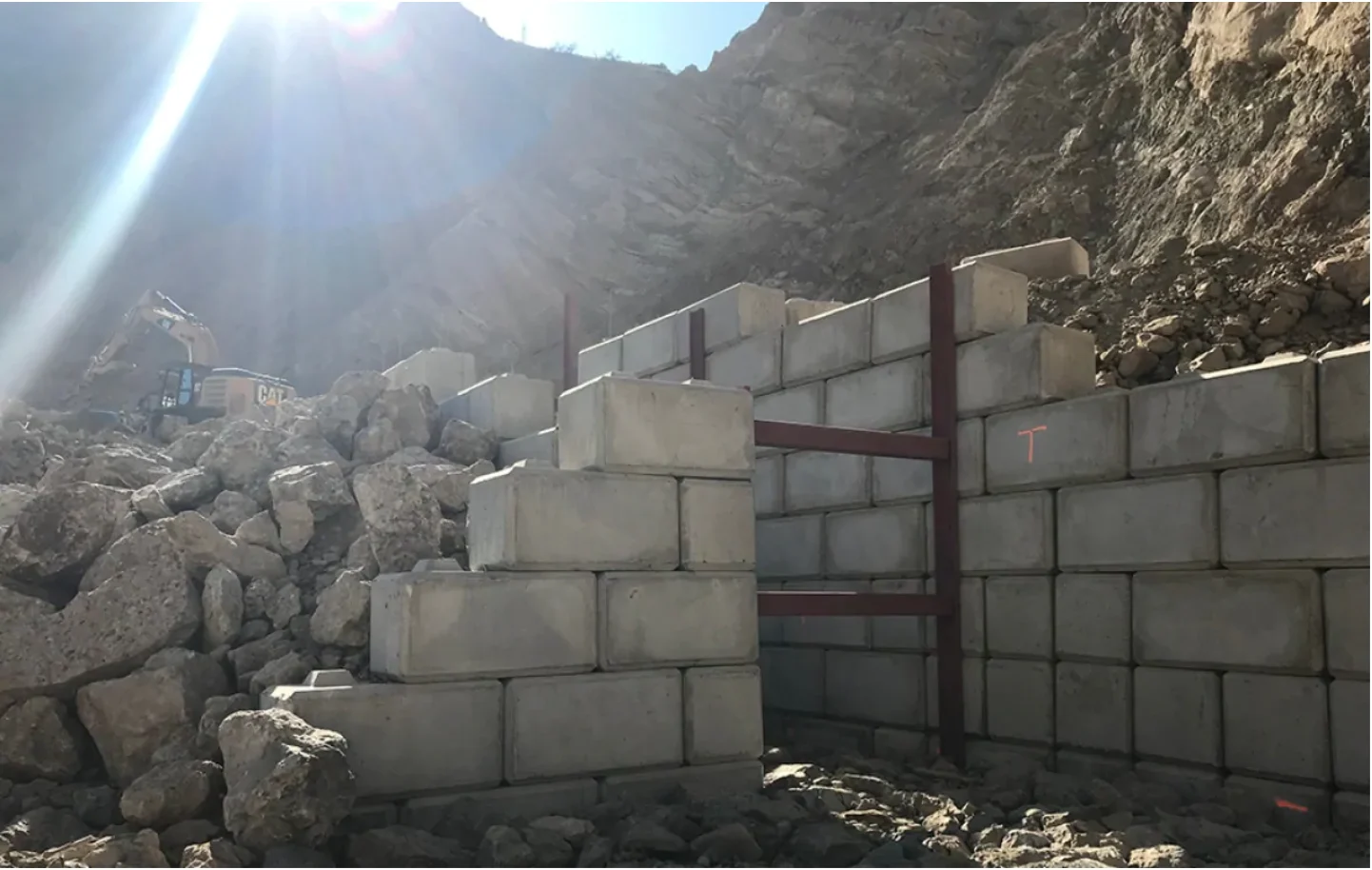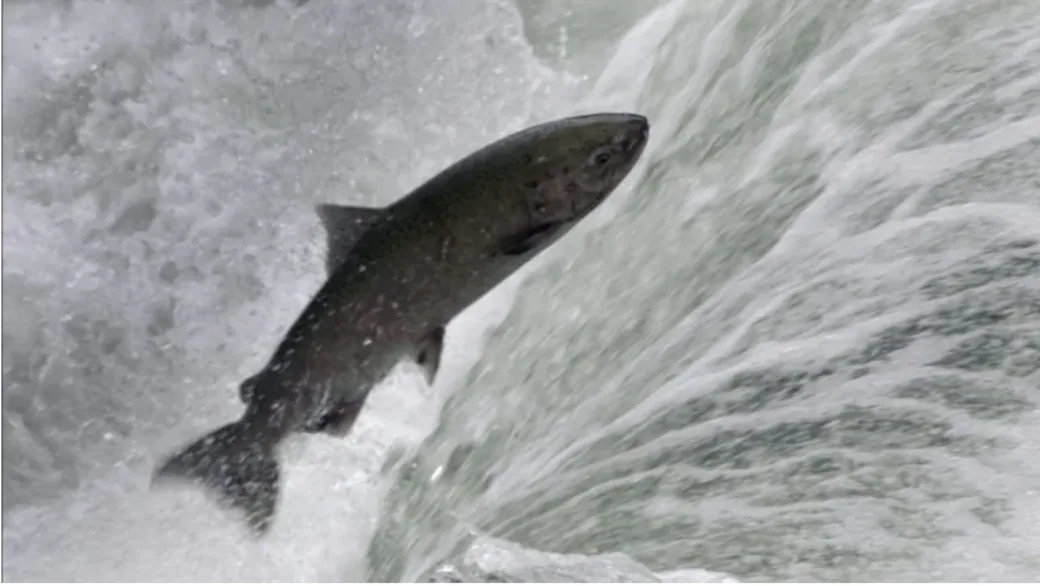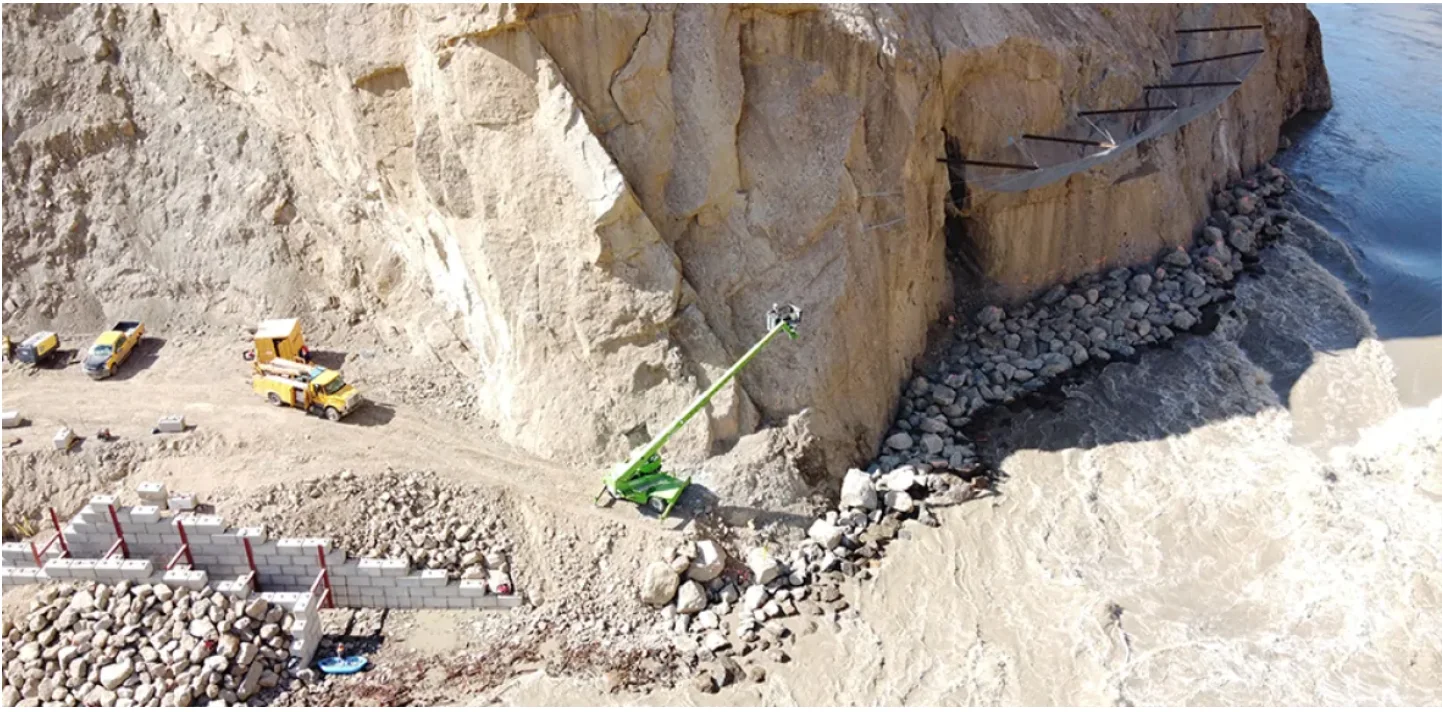
'Salmon cannon' to help threatened Fraser River fish bypass rock slide
With salmon season approaching, crews are working to get measures in place to help migrating salmon bypass a massive rock slide that has blocked the Fraser River north of Lillooet.
Construction of a fish ladder is underway in conjunction with the installation of a pneumatic fish pump — otherwise known as a "salmon cannon" — that will carry spawning salmon through tubes over the slide area that's been blocking the river since late 2018.
According to officials from Fisheries and Oceans Canada, the two innovations are meant to work together.
WATCH BELOW: BLAST USED TO HELP REMOVE A PORTION OF THE BIG BAR LANDSLIDE BLOCKING SALMON IN FEBRURARY
The fish ladder will, in theory, help migrating salmon gain the elevation necessary to move into a holding pool located below the slide area.
From there, the fish will be fed into a tube created by the Seattle company Whooshh Innovations, pushed 160 metres above the slide before getting spit out upstream where they can continue their spawning journey.
"In terms of what percentage of success we'll have, I can't hazard to guess," said Gwil Roberts, project leader for the Big Bar response.

Over 500 concretes blocks are being used to construct a fish ladder to deliver spawning salmon to the holding pool where they will sorted and then put in the 'salmon cannon.' (Fisheries and Oceans Canada)
"We'd like to see fish passage completely restored at the site so that fish are able to move across completely on their own volition. But if they can't get across the slide site this season, we have measures to help them."
In its first phase, the Whoossh system will used two different size tubes to accommodate different size fish. Roberts says plans are to eventually scale up to five different tube varieties.
Fish in the holding pool will be sorted either by humans or by a machine that scans them for size and then pushed into the correct tube, he said.
In June of 2019, officials became aware of the rock slide that deposited an estimated 75,000 cubic metres of rock into the remote canyon, creating a five-metre high waterfall and blocking the natural migration of sockeye and chinook salmon swimming upstream to spawn.
Blasting and rock removal has been taking place, but the remote and dangerous location has made work challenging and slow.

A Whooshh Innovations pneumatic fish tube. (Whooshh Innovations)
An estimated 500 interlocking concrete blocks are being used in the construction of the fish ladder.
According to Michael Crowe, biological program manager with the Big Bar response team, river water will be pumped to the top of the fish ladder and then released to flow down it.
"It's a system similar to other fish ladders such as Hell's Gate," he said. "What it should do is allow us to bring the fish up to a working platform that permits safe operation even at exceptionally high water levels, which we are experiencing already this year."
Earlier this month, crews completed construction of another project aimed at helping salmon swim past the slide.

A chinook salmon fights its way upstream. Courtesy: CBC News
The "nature-like fishway," as it's called, was created by placing large boulders in the fast flowing water to act as breaks, create resting pools and generally make the rapids more passable.
Crowe say the usability of both systems overlaps but will be somewhat determined by the water level of the river.
"The intention is to have different systems that can work at different flow volumes," he said.
Roberts says in the event the salmon tube doesn't work, the fish can be collected in a tank and transported around the slide by truck.

Big Bar fish ladder construction. (Fisheries and Oceans Canada)
He says there's no way of telling how well the systems will work until many months down the road.
"I don't think it will be until the end of this summer that we will understand how successful we've been," he said.
The first salmon of the season are expected to arrive at Big Bar in late May.
Late last year, Fisheries and Oceans Canada estimated more than 275,000 salmon managed to get past the slide. Of those, about 245,000 passed through naturally, while others were transported to their spawning grounds by helicopter and other means.
In October, federal scientists told the Pacific Salmon Commission there was a "meaningful chance of extinction" for three of the salmon runs.
The year 2019 was considered a disastrous year for salmon in B.C. with returns well below what experts projected.
WATCH BELOW: FISH BLOOD, GUTS SPILLS INTO VANCOUVER WATER FROM SALMON PROCESSING PLANT
--
This article, written by Karin Larsen, was originally published for CBC News










